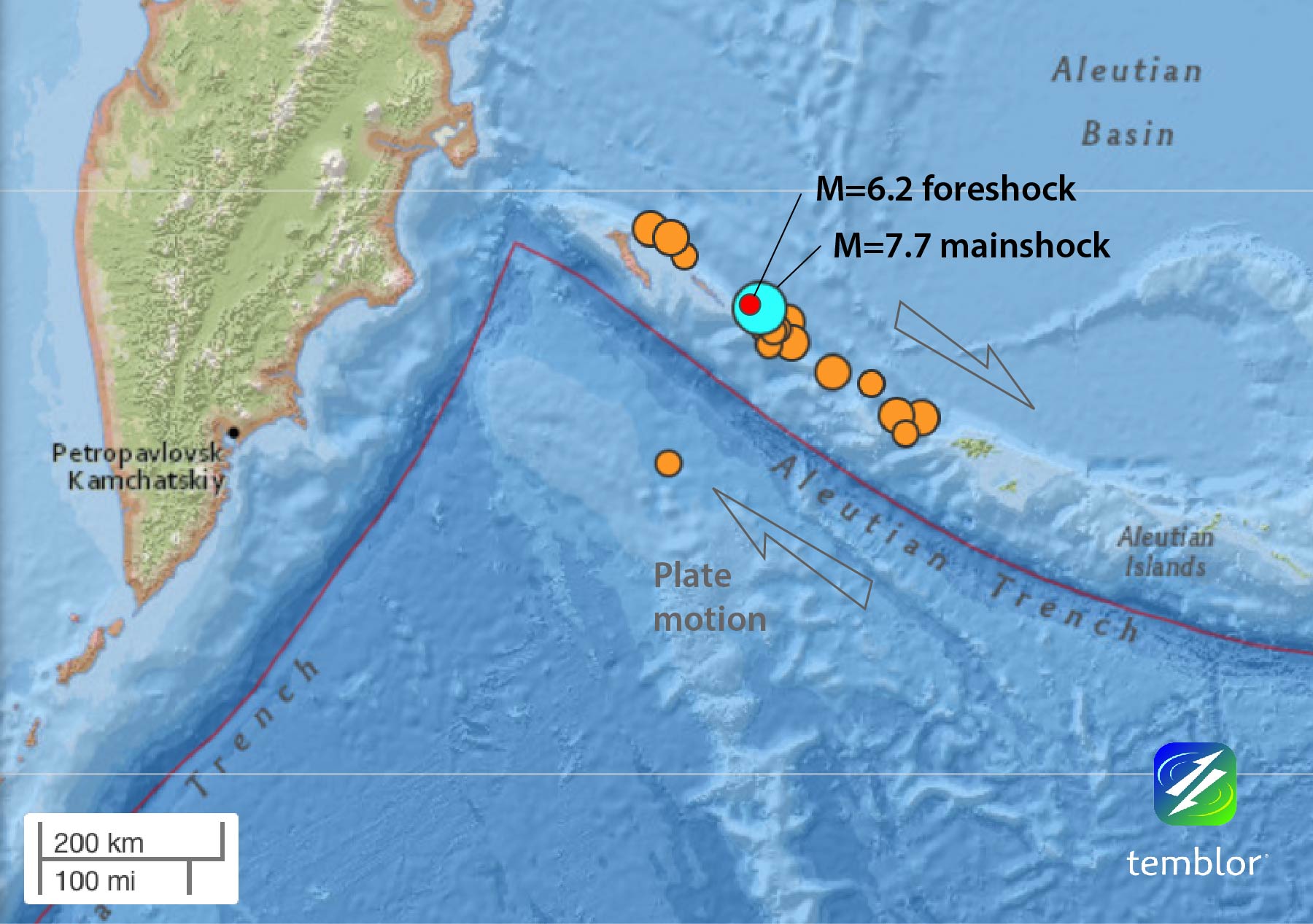By Ross Stein, Temblor

The mainshock stuck on July 17 at 23:34 UTC. It followed a M=6.2 by 12 hours earlier only 12 km (7 mi) away. Although this is adjacent to a subduction zone, where the Pacific Plate is being shoved under the Aleutian and Kamchatka islands, the plate motion here is almost purely right-lateral. And so, this quake is similar to, or perhaps a bit smaller than, the 1906 San Francisco earthquake.

to extend 400 km along strike (the NW-SE axis). The 1906 San Francisco earthquake ruptured
for about 475 km and is variously assessed to be M=7.7-7.9. The mainshock is turquoise.
Twelve-hour foreshock sequence
Some 12 hr before the mainshock, there was a M=6.2 earthquake about 12 km to the northwest, which was followed by M=5.1 and M=4.4 aftershocks or subsequent foreshocks within the next few hours. Undoubtedly there were smaller shocks, but the detection limit in this remote area is probably about M=4.5. Foreshock sequences are rare among any earthquakes, and strike-slip shocks and did not precede the 1906 M=7.8 or the 1989 M=7.0 Loma Prieta shocks.

Reference
USGS ANSS catalog
- Earthquake science illuminates landslide behavior - June 13, 2025
- Destruction and Transformation: Lessons learned from the 2015 Gorkha, Nepal, earthquake - April 25, 2025
- Knock, knock, knocking on your door – the Julian earthquake in southern California issues reminder to be prepared - April 24, 2025
